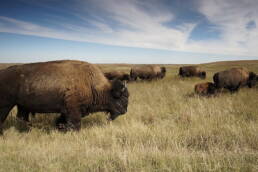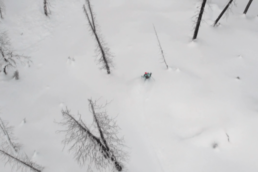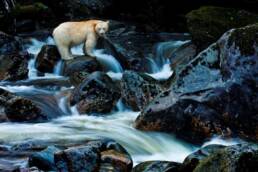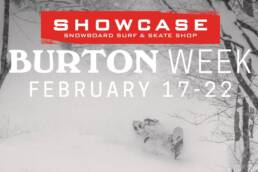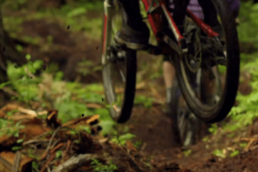Amid concerns over the endangerment of species, spaces, and cowboy culture itself, the American Prairie Reserve project could succeed in protecting the contiguous United State’s largest nature reserve. All it will take is $500 million and a passion for progress, each victory measured in blades of wild grass. By Clare Menzel.
In the broad expanse of north-central Montana, a prairie dog peeps from its burrow. With shiny black eyes darting, it sniffs. The wind travels from someplace beyond the smooth horizon, that sudden line where sky plunges behind undulating prairie. It carries the scent of sagebrush steppes and ponderosa pine on the banks of the Missouri River. It sweeps over prominent limestone ridges, undulating hills, level expanses of leftover glacial till, and isolated mountain ranges like the Little Rockies and the Bear Paws. It threads through shin-high grass, rippling the patterns inscribed by grazing herds. This wind carries the seeds of change. Or, rather, the seeds of return.
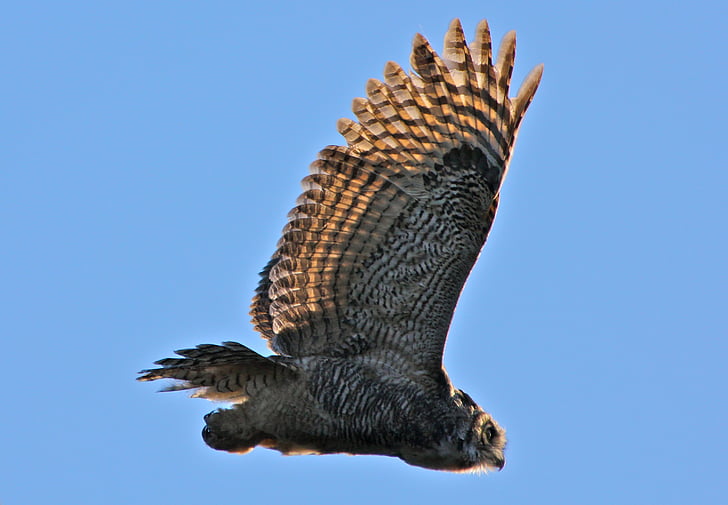
In the Great Plains of the United States, the rabbit-sized, black-tailed prairie dog—a keystone species and landscape architect—occupies just two to five per cent of its historic range. The primary causes for its decline are eradication and habitat loss. Temperate grasslands such as these are one of the world’s most human-altered and least-protected biomes. Just five per cent of the United States’ indigenous prairie remains—perhaps because its uniform appearance belies exceptionally diverse flora and fauna, and certainly because its fertile soils can support a substantial agricultural biomass. A majority of this utilitarian landscape has been transformed into grazing grounds for cattle or tilled into farmland.

The enormous, semiarid plains of interior North America reach from the United States-Mexico border across 10 states, through Alberta, Saskatchewan, and Manitoba, and into the Northwest Territories. The Missouri River, which drains America’s portion of the plains, originates in the Rocky Mountains of southwest Montana. It travels north before bending east and flowing, more or less horizontally, across Montana’s grasslands, which cover the state’s eastern two-thirds. The river meets its biggest impoundment about 160 kilometres (100 miles) from the North Dakota border. The ecological region of north-central Montana that encompasses the river corridor upstream of the Fort Peck Dam, plus the chunk of prairie extending 100 kilometres (62 miles) north to the Saskatchewan border, is known as the Northwestern Glaciated Plains.
This is the homeland of the Assiniboine (Nakoda), Gros Ventre (Aaniiih), Blackfeet (Niitsitapi), Crow (Apsáalooke), Sioux (Očhéthi Šakówiŋ), and Chippewa-Cree nations. And even though it has been shaped into cattle country over the last century, an uncommon amount of original prairie survives. “These grassland areas are some of the most biologically rich and biologically productive landscapes in the world,” says Paul Santavy, project manager of the region’s Charles M. Russell Wildlife Refuge, which is the second largest in the lower 48 states. “It’d be nice—more than nice, it’d be fair—to have an equal representation of protected grassland areas [compared to alpine, forested, or tropical ecosystems].”
“With climate change, we’re not the same world we were 200 years ago, and it could be that the ability the habitat has to support species has changed. … I’m interested in making a world where there would be predators and there would be prey, and they would be able to exist in a place where there’s fences and people and houses and the harvesting of wildlife.” –Smithsonian wildlife ecologist, Bill McShea
Moreover, deep-rooted grasslands absorb more carbon dioxide from the atmosphere than they release, deeply enriching soils in the process. Recent experimental models show that grasslands may actually become the most reliable ecosystem for carbon sequestration as the increased droughts and wildfires of a warming climate place greater stress on forests. Protecting prairie could be essential not only for preserving a unique biological community but also for mitigating climate change.
The conservation movement is taking note. Over the last 18 years, a Bozeman-based non-profit organization has been acquiring parcels of private land in north-central Montana in the hopes of someday connecting about 3.5 million acres of existing, fragmented public land. When assembled, the seamless sea of prairie would be slightly larger in size than Glacier National Park and Yellowstone National Park combined. The American Prairie Reserve (APR) is turning this overlooked share of wild, wind-tousled Great Plains into the largest nature reserve in the contiguous United States.
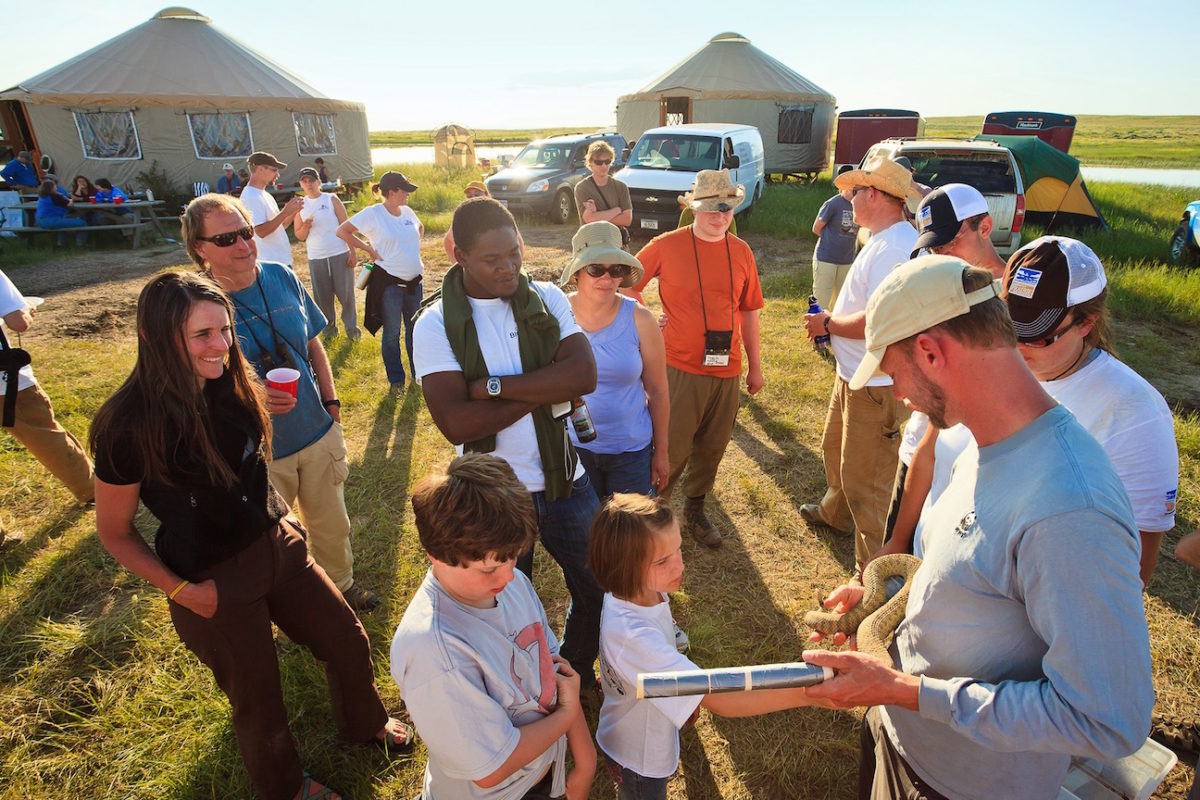
IN 1999, THE NATURE CONSERVANCY, one of the United States’ most respected science-based conservation organizations, published a comprehensive report detailing stewardship priorities in the Northern Great Plains. It identified Montana’s Northwestern Glaciated Plains as a region with both high intrinsic biodiversity and high-urgency threats, such as the plummeting prairie dog population, poor grazing management, and habitat loss. In response, the World Wildlife Fund launched an initiative to restore grasslands habitat.
This led to the formation of the APR in 2001, with Sean Gerrity, a Montana-raised Silicon Valley entrepreneur, at the helm. The APR set out to lease or buy, restore where needed, and manage land abutting the Upper Missouri River Breaks National Monument, the Charles M. Russell National Wildlife Refuge, and the Fort Belknap Indian Reservation. The APR landed on its 3.5 million-acre goal via estimates by biologists for the amount of uninterrupted prairie needed to sustain an ecosystem with a complete roster of plants, animals, and habitats. Any parcels the APR acquires will be managed alongside state and federal agencies for the purposes of conservation and public access, in that order.
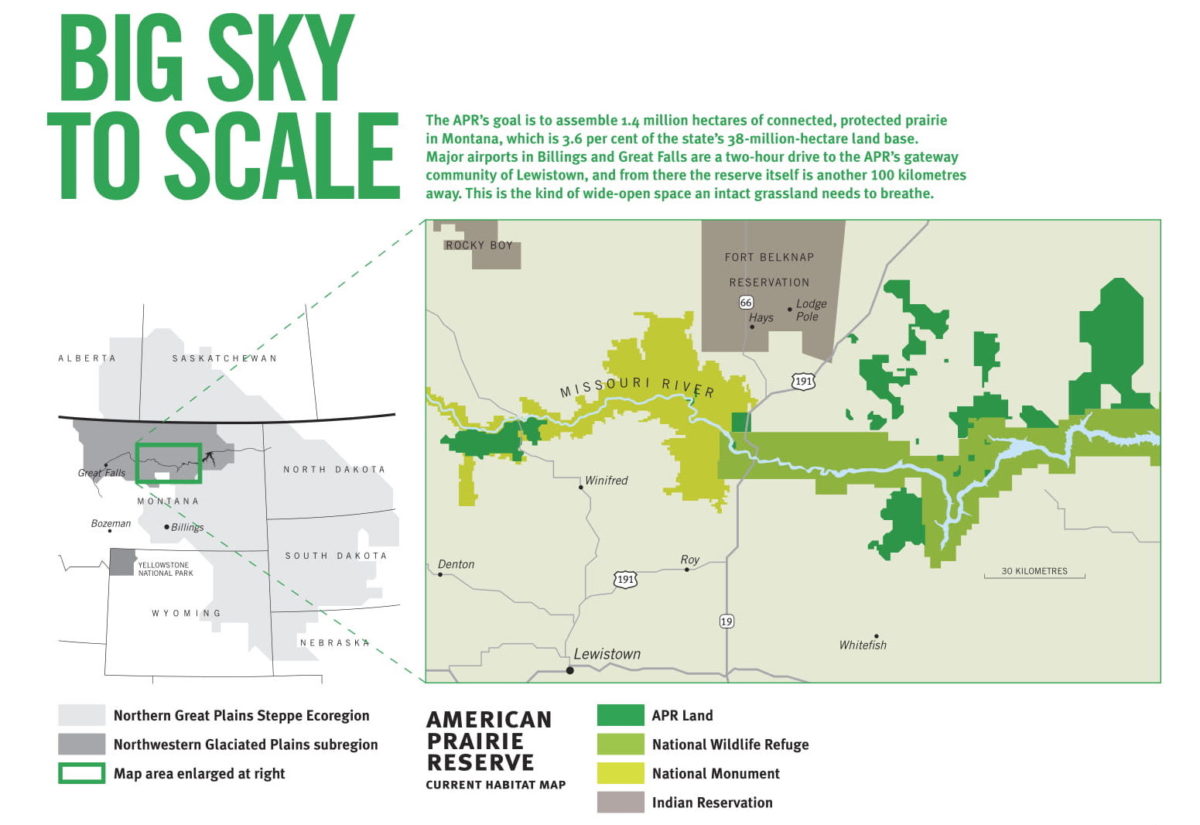
At press time, the APR has leased or purchased a total of 405,169 acres: 95,549 are privately owned by the APR, and 310,620 are federal or state lands eased by the reserve. There’s no official timeline for completion, and the 501(c)(3) non-profit has estimated that it will take $500 million to reach its goal. The current CEO is East Coast-born businesswoman Alison Fox, who has worked for the organization in a variety of roles for the last decade. The APR maintains 40 year-round staff, 11 of whom live in north-central Montana, though those based at the Bozeman headquarters visit often. The APR’s eight full-time staff scientists primarily work in the field.
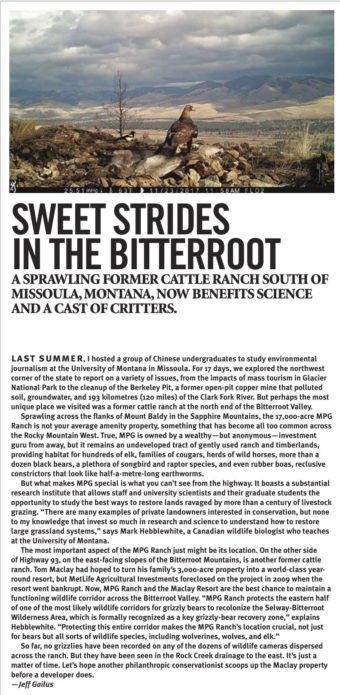
To assess all its land-management decisions, the APR uses the Freese Scale for Grassland Restoration, which its director of wildlife restoration, Kyran Kunkel, had a hand in developing. The scale measures whether land-management decisions primarily promote ecological processes or the production of grain and cattle. It considers 10 different factors that impact overall ecological conditions, such as habitat connectivity, large management units, resiliency to periodic weather extremes, historic fire patterns, and natural populations of predators. The APR annually scores its different parcels; the intention isn’t necessarily to hit the highest biodiversity marks but to find a balance where human interests don’t outweigh the ecosystem’s ability to flourish.
While experts have an idea of prairie species’ original ranges, estimates of their historic abundance is less solid, says Bill McShea, a Smithsonian wildlife ecologist who has worked in grasslands around the world. In late 2018, the APR launched a new research project in partnership with the Smithsonian Conservation Biology Institute to enrich its understanding of fundamental prairie ecology. The APR promotes an “if you build it, they will come” approach, meaning the aim is to shape a landscape that would support quasi-historic but healthy plant and animal communities without much human intervention. “I’m not so interested in creating the world that was 200 years ago,” McShea, the project lead, says. “With climate change, we’re not the same world we were 200 years ago, and it could be that the ability the habitat has to support species has changed. … I’m interested in making a world where there would be predators and there would be prey, and they would be able to exist in a place where there’s fences and people and houses and the harvesting of wildlife.”
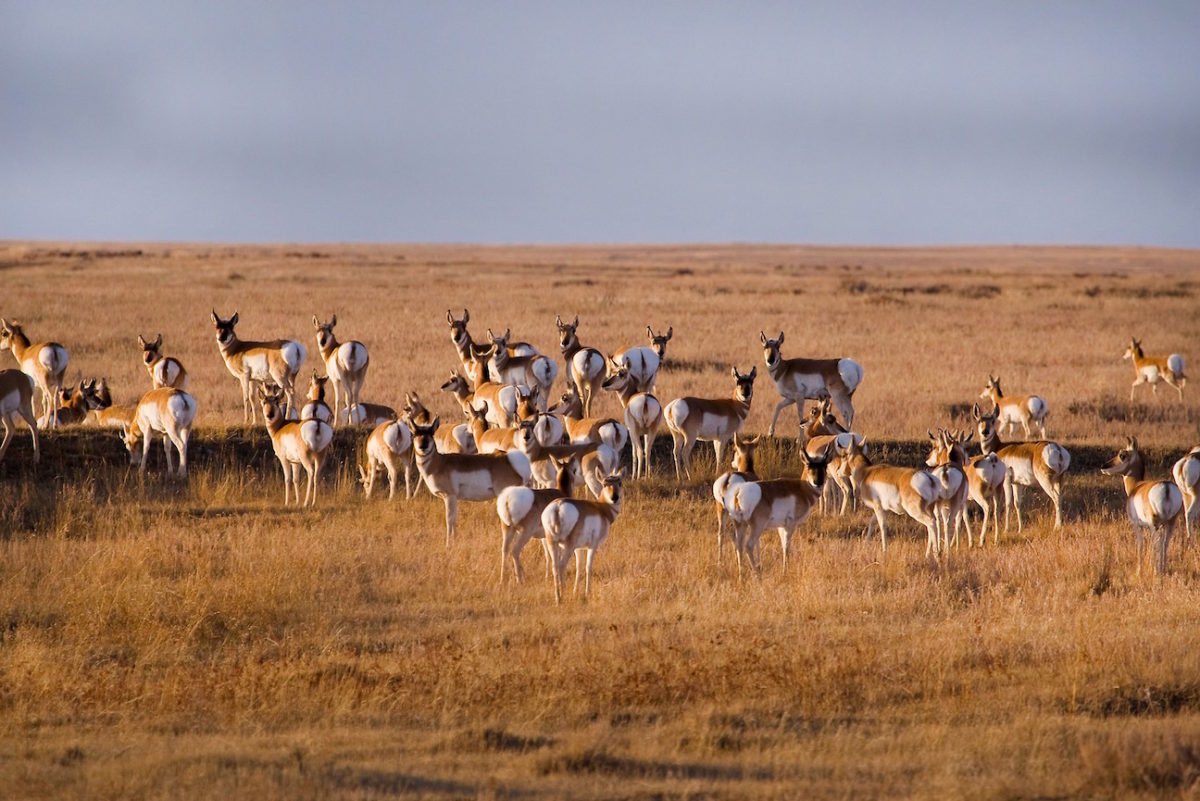
Photographer: Dennis Lingohr.
THE DOMINANT VEGETATION here is, of course, grass, myriad varieties of grass. Between 400 and 500 plant species occur in the region, including triangular-stemmed sedges, smooth-stemmed rushes, flowering forbs, and woody plants like trees and shrubs. The deep-rooted plants that sustain this ecosystem can withstand drought, fire, hungry grazers, and raging winds—anything except a plough. Though most land the APR acquires is untilled, the organization is reclaiming more than 650 acres of disturbed soil. That process, which includes smoothing out crop furrows and planting a custom seed mix of native vegetation, may take up to a decade to complete. “Having native prairie on the ground is necessary to support the huge amount of biodiversity that evolved and depends on these grassland ecosystems,” Santavy says.
Imagine the cacophony of life that’s possible here: Brewer’s sparrows singing to defend their nesting territory, sage grouse strutting with their rippling chest plumage, long-billed curlew probing for earthworms with needle-nose bills, and ferruginous hawks displaying their white underbellies from high above it all. More than 350 winged species—from songbirds to upland game birds to raptors—inhabit these plains. North America’s grassland birds have experienced the most dramatic, consistent, and widespread population declines of any group of species on the continent. For example, the McCown’s longspur, which is a United States-Canada stewardship species, declined by over four per cent per year between 1966 and 2014, resulting in a cumulative population decline of 88 per cent, as reported by the North American Breeding Bird Survey.
When assembled, the seamless sea of prairie would be slightly larger in size than Glacier National Park and Yellowstone National Park combined. The American Prairie Reserve (APR) is turning this overlooked share of wild, wind-tousled Great Plains into the largest nature reserve in the contiguous United States.
The inventory of Montana grasslands fauna is a long one, including nine species of bat, four of shrew, three of rabbit, 14 of rodent, nine of reptile, 17 of fish, and six types of amphibian, plus gophers, porcupines, weasels, skunks, mink, and raccoon. Historically, herbivorous mammals like bison, prairie dogs, elk, pronghorn, bighorn sheep, mule deer, and white-tailed deer supported a robust line-up of predators, including wolves, grizzly bears, and cougars. The APR’s list of at-risk species includes the vulnerable swift fox, the endangered black-footed ferret, and the near-threatened bison.
Pre-European contact, somewhere between 30 and 60 million bison roamed the American Great Plains, shaping habitat with their grazing patterns and sustaining Plains tribes. Settlers slaughtered staggering numbers of bison, both as a destructive act of colonization and to enrich themselves through the trade of leather goods. The APR estimates that bison completely disappeared from Montana’s northern plains somewhere around 1865. In 1889, one zoologist calculated that only 1,000 bison remained in all of North America. Recovery efforts mounted, and now an estimated 500,000 bison walk the continent, according to the Wildlife Conservation Society.
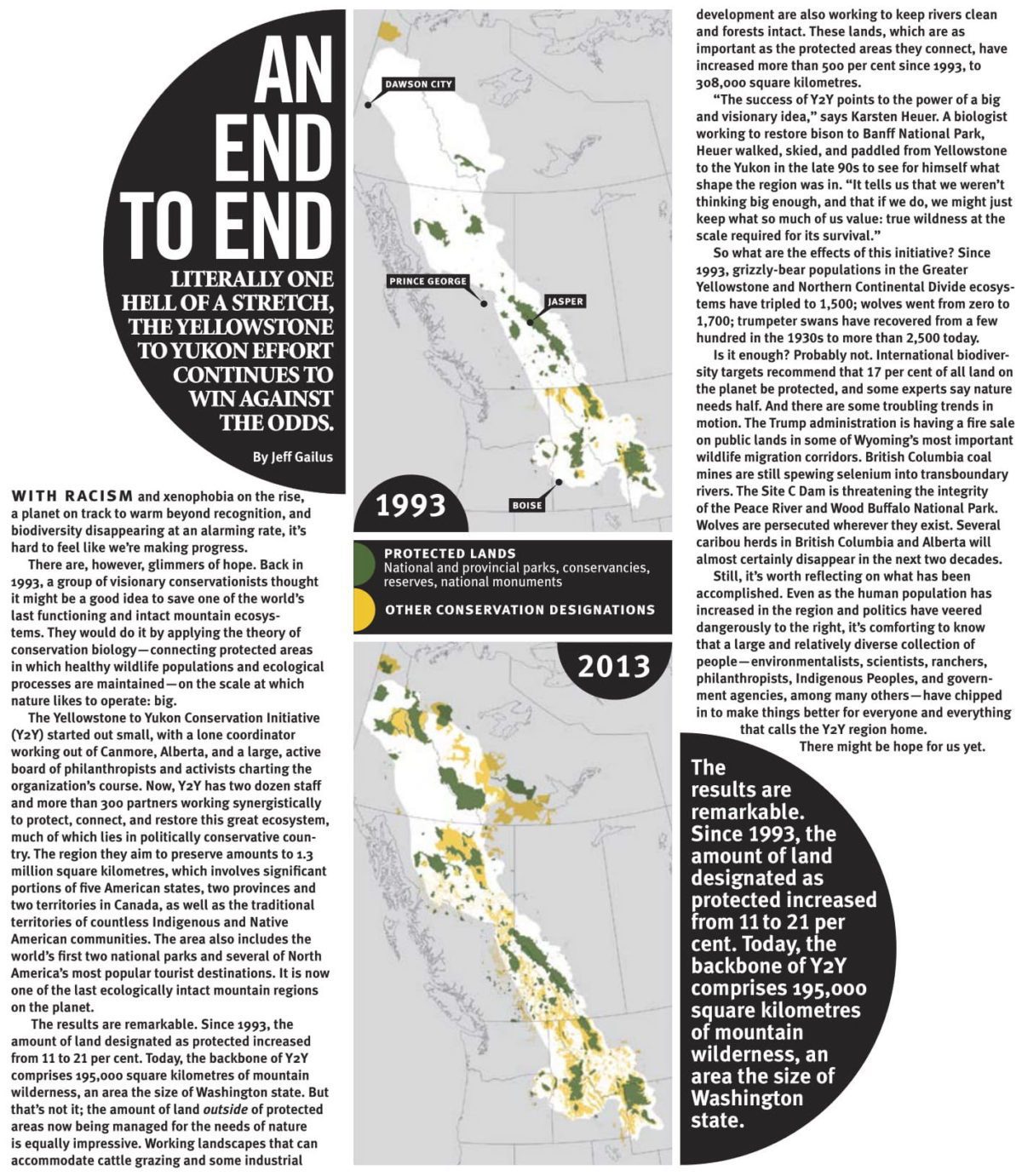
In fall 2005, the APR released 16 bison onto the American Prairie Reserve. (The same year, Canada’s Grasslands National Park in Saskatchewan also reintroduced the species, with a herd of 71.) Though the APR’s conservation herd exists solely to function as part of the ecosystem, the State of Montana classifies all bison as livestock, so the APR pays grazing fees and is liable for any damage they cause. At press time, the herd totalled 833—the organization’s bison-management plan establishes the goal of a herd numbering at least 10,000. “They’ve been able to move forward with bison restoration in a way we haven’t been able to … that’s the beauty of them being private,” says Santavy. The “APR can be much more focused on a specific agenda.”
Because the wildlife refuge administers public lands and resources on behalf of the American people, managers are beholden to public opinion. And some north-central Montanans have become staunch bison opponents, for fear of property destruction and the spread of disease to livestock. But the herd is just one point of contention. “There’s a lot of distrust and concern about how local communities will fare … [with the APR] converting prairie to conservation lands that aren’t producing a commodity,” Santavy explains. “It doesn’t fit the narrative of local values.”
Numerous small ranching and farming communities populate the region, and among them broods anxiety that the APR threatens a multigenerational agricultural and cattle-grazing lifestyle. Some families are worried that the APR, with support from deep-pocketed philanthropists and a mission widely appealing to outsiders, will make their working life on the prairie so difficult that they’ll be forced to sell out. The opposition group, the United Property Owners of Montana, proclaims, “Save the Cowboy, Stop the American Prairie Reserve.” An us-versus-them mentality has emerged, Santavy says, with locals convinced that cattle and conservation can’t co-exist. Even so, he’s hopeful that there is a path forward for multiple land uses. “It’s forward progress by inches,” he says. “With people realizing that each inch of forward progress [for conservation] didn’t take anything away from anybody else, didn’t hurt communities.”
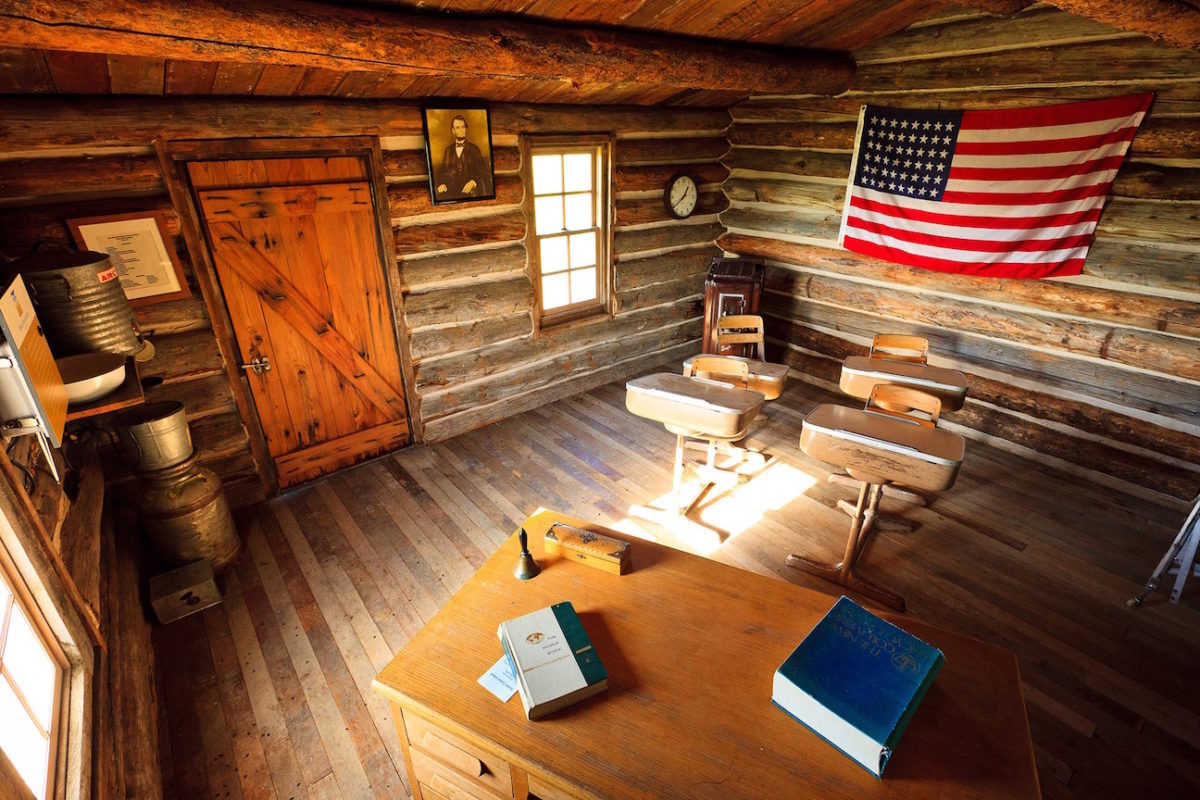
Beth Saboe, the APR’s public information and outreach manager, who grew up in eastern Montana’s sugar beet country, describes a “small, vocal minority of opposition. When you look at the big picture, we have more overwhelming support.” The project is stacking up accolades: in early summer 2019, National Geographic will name this prairie among its five last wild places on the planet. And in the coming years, Saboe explains, the APR hopes to earn even more backing as word spreads about recreation in this grasslands area. “The recreation aspect is the newest and most exciting project,” she says. “You think of American Prairie Reserve, and we’re big and spread out. … It seems like it’s this idea, not really a place to visit. We’re working to make people aware of visitation opportunities.”
This region is already an epicentre for hunting big game, like pronghorn, bighorn sheep, and elk, as well as fowl, like pheasant, grouse, and duck. The APR is developing its infrastructure to support increased tourism. In 2018, it opened two nine-bed huts that will eventually be part of a low-impact lodging network of at least 10 structures reaching over 321 kilometres (200 miles). There are also plans to build a discovery centre in Lewistown, Montana, a short drive south of the range, creating a gateway point for visitors. And the APR has forged affiliations with the National Outdoor Leadership School, Leave No Trace, and Klean Kanteen, plus a partnership with outdoor-gear brand Stio, to promote mountain biking on the prairie as well as floating and fishing on the Missouri River. One APR board member, the Montana-born landscape artist Clyde Aspevig, has encouraged visitors to “land snorkel,” or simply wander and witness, with no destination in mind.
“You’re smelling what the prairie used to smell like, and what the prairie should smell like,” George Horse Capture Jr., former vice president of the Fort Belknap Indian Community Council, describes in a promotional video for the APR about visiting the reserve. “Close your eyes, find a little time to sit back in the sun, open up your mind.”
The prairie hasn’t attracted the same overdevelopment that’s suffocating mountain towns and coastal areas, a characteristic that the APR’s supporters are keen to highlight. A majority of tourists in Glacier and Yellowstone national parks experience congestion and chaos. In the American prairie, you don’t have to work to get beyond the crowds. There are no human swarms here in the wide open. Just arrive. Watch sparrows and finches play in the wind currents above gently grazing pronghorn. Listen to the quiet whisperings of these unpretentious grasses.
Clare Menzel
Clare is an East Coaster who found her way west and who now lives in Northwest Montana. She is a regular contributor to Kootenay Mountain Culture Magazine.
Related Stories
Great Canadian Birds Eye Beautifulness
There is so much great media coming out of the Kootenays these days. Here's a great clip shot and edited by B4apres…
Spoil – Documentary on the Great Bear Rainforests
Is the economical growth in Canada worth destroying the entire West Coast of Canada? SPOIL - A powerful documentary on…
Burton Kicks Off Its Showcase Week in Whistler
Burton Snowboard returns to Whistler for its annual Burton Week celebrations. Here's what's on the agenda. From…
Shambhala Announces its 2022 Line-up
Shambhala, Canada’s longest-running electronic music festival, released its 2022 lineup today after a two-year hiatus.…
Whitecap Alpine Has Revealed its New Sauna and its Awesome
Whitecap Alpine has just revealed one of the coolest backcountry saunas in the entire province. Check it out. Hidden in…
Retallack Opens its Doors to Summer Shredding
Retallack - the world acclaimed backcountry catskiing destination, and Riley McIntosh – previous founder of Rilor…


